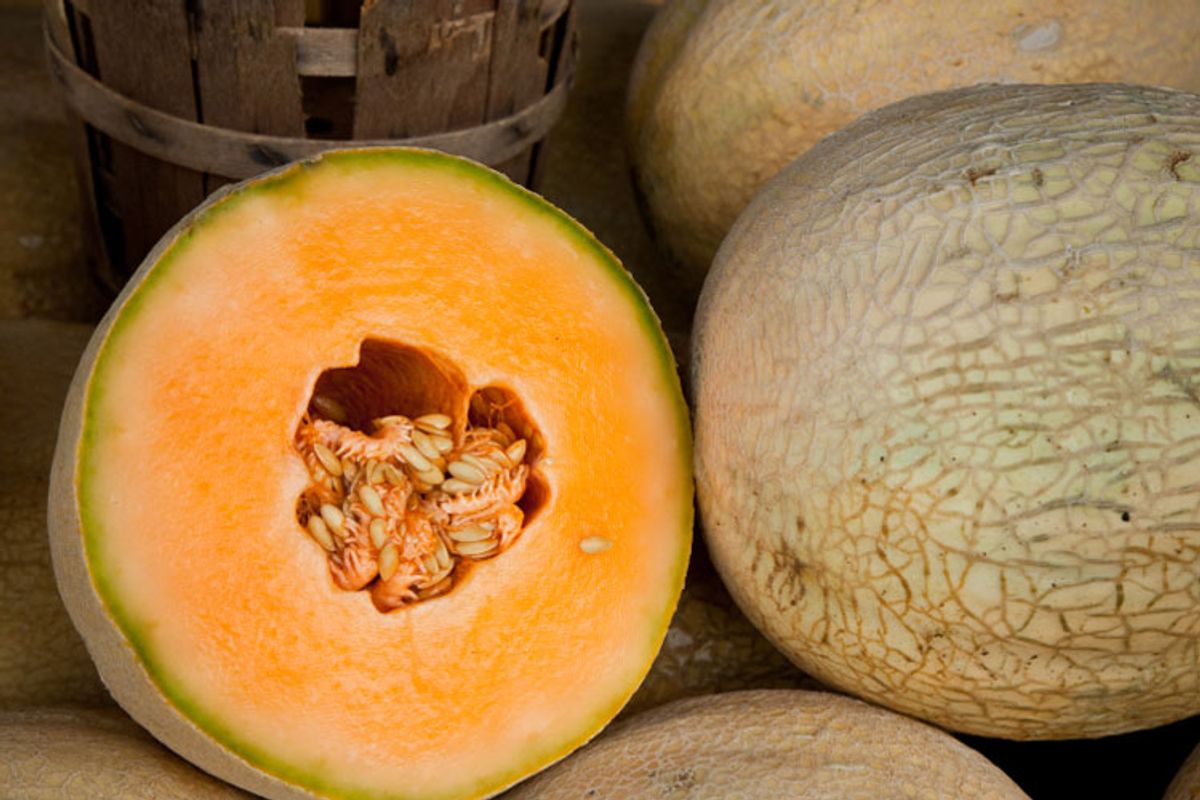When Darryl Mosher travels, he can't help being a little disenchanted with his complimentary breakfast fruit salad. A farmer and a professor of product knowledge at the Culinary Institute of America, he spoke to me in a gentle voice, richer in sympathy than condemnation: "It's just a shame that with every continental breakfast there's a bowl of cantaloupe, when three-quarters of the year, you might as well be eating more cereal. They're just so exceptional when they're really ripe in season."
Despite their ubiquity, cantaloupes are some of the loveliest citizens of the fruit world -- they can have up to 20 percent sugar, the sweetest of any melon -- but a bum specimen often tastes no more exciting than a cucumber. Now that most of the country is in the thick of melon season, when they can really boast the sweetness and the floral, tropical aromas they were meant to have, Darryl shared his tips on how to shop for them.
Cantaloupes are unique among melons in that they are the only ones that continue to ripen after they're harvested. It's not a lot; most of the sugar-and-perfume-making magic has to happen while it's on the vine, but the good news is that when you buy a freshly harvested melon that already smells terrific, you can go to bed knowing that it's going to get even better.
The other thing that's unique about cantaloupes is that when they're fully mature, they "slip" from the vines and don't need to be cut from the plant. They'll just give themselves up to you -- take me, you animal -- so look at the stem end, where it's connected to the vine. You want what's called a "full slip" -- an "innie" of a belly button, nice and clean. If it's an outie, that means the picker tore the fruit away before it's ready, and it won't ripen. It's a sure sign of a flavorless melon.
Next, pick it up and take a look at the whole thing, making sure it's got a nice symmetrical shape and is heavy for its size. (This is standard melon advice.) Feel the netting, that webby layer of skin. It should feel dry or "corky," not tacky or waxy. And the background color should have very little, if any, green -- you want it yellow or a creamy color. Green skin means that it's unripe or worse, immature, meaning that it can't ripen.
Unless you're really into touching dry and corky things, here comes the most satisfying test of all. Smell the melon, particularly at the blossom -- the other side from the stem end. Feel free to touch it a little there, and don't feel bad about it, despite how creepy I'm making it sound. It should be just a little softer than the rest of the melon, and the smell should be terrific, tropical and sweet and floral. (They can be so fragrant that in the 1800s, pocket-size variants were bred to be kept on your person as an air freshener. You know, before people bathed regularly.)
If you can sign off on all of the above, all signs point toward a serious cantaloupe.
As a bonus, if you're buying the fruit from a farmer and can find out when it was harvested, know that peak ripeness is usually two or three days after it was picked. Take it home and let it sit at room temperature, checking on it daily. If it seems to be getting more fragrant and whatever green color that's on it is fading, it's still ripening. After a day of that, keep it in the fridge, where it will stay at peak ripeness for another day or two. Or, better yet, eat it.

Shares